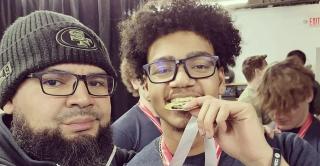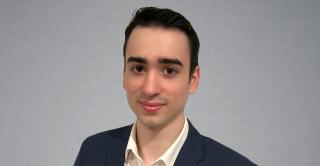
Current & Upcoming Exhibitions
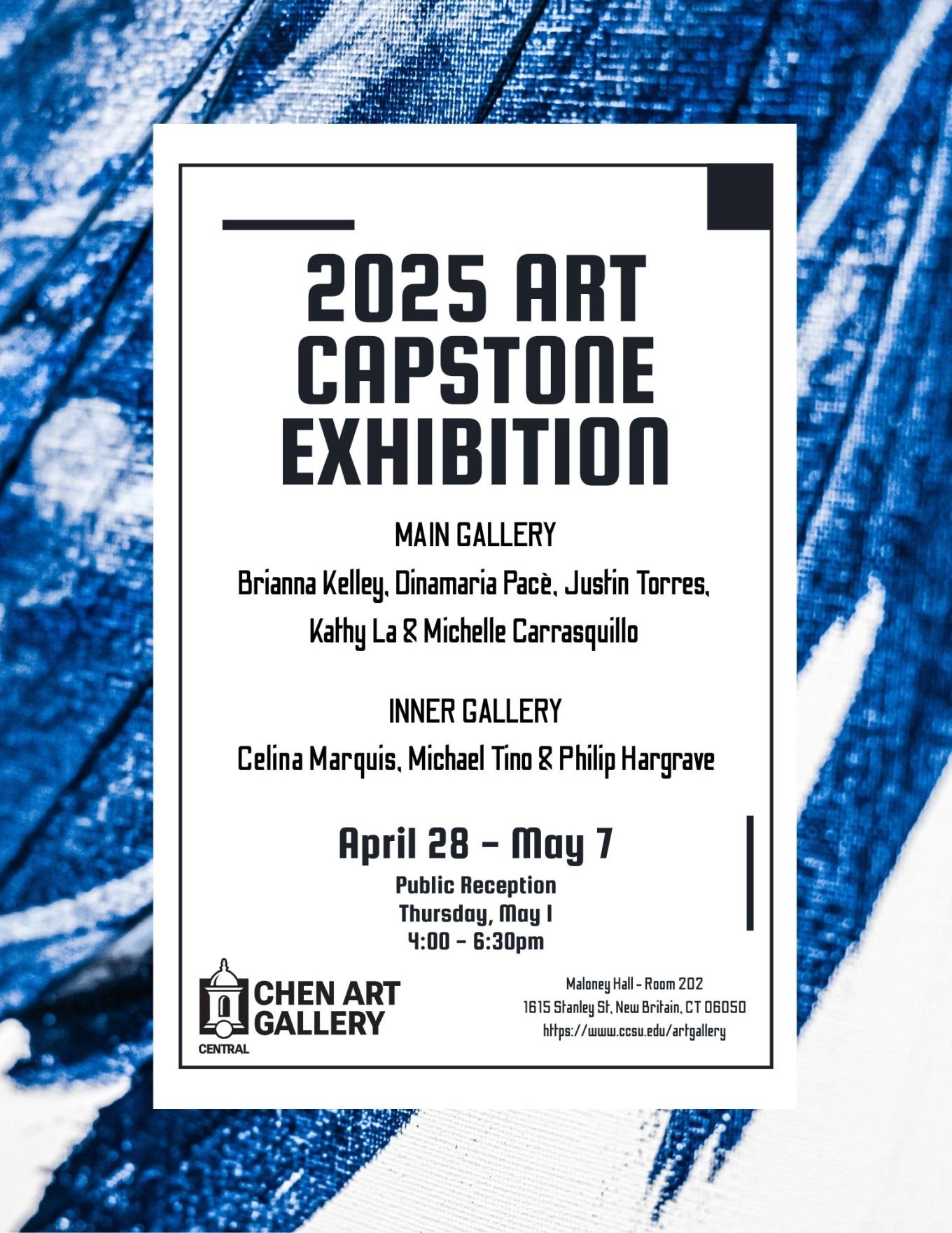
2025 Capstone Student Exhibition
Dates: April 28 - May 7, 2025
The Chen Art Gallery is proud to present the 2025 Capstone Student Exhibition, an exhibition showcasing the artwork of Capstone B.A. students in Art, marking the culmination of their studies at CCSU. The exhibition takes place from April 28 - May 7, 2025. This show highlights a variety of works across different disciplines within the B.A. in Art major. Participating students are featured in the Main Gallery and include Brianna Kelley, Dinamaria Pacè, Kathy La, Justin Torres, and Michelle Carasquillo. This exhibition was curated by the students of the Spring ‘25 Art 490 Curatorship course under the
guidance of Art Faculty Glenn LaVertu. Additionally, our Inner Gallery features a preview of select works from graduate students Celina Marquis, Michael Tino and Phil Hargrave.
Please join us in congratulating these students at a reception on Thursday, May 1st from 4 – 6:30pm. Refreshments and hors d’oeuvres will be served. Awards will be selected and presented by guest juror Peter Albano, Visual Arts Manager of Real Art Ways (Hartford, CT), at 4:30pm. The reception is free and open to the public.
Awards graciously donated by Jerry's Artarama West Hartford
YourArtSupplies
- Fall 2025 Art & Design Faculty Exhibition September 11- October 10th, public reception Thurs. September 11, 4-6:30pm
- 2025 Connecticut Art Education Association Exhibition October 24 - November 14 https://www.ctarteducation.net/
- Art Educator Student Exhibition December 1-5, public reception Thurs. December 4, 4-6:30pm
past exhibits
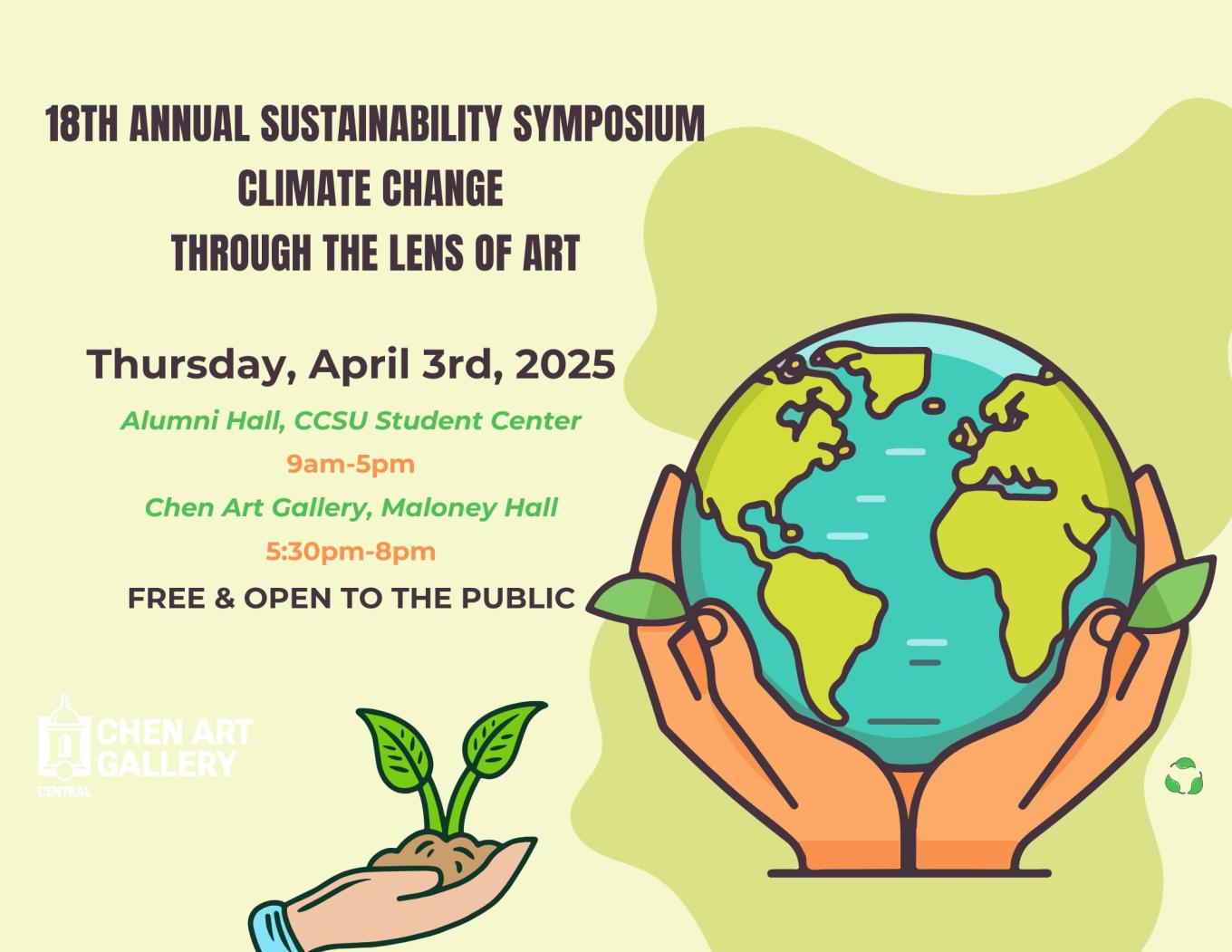
18th Annual Sustainability Symposium - Climate Change Through The Lens of Art
Public Reception
Date: Thursday, April 3, 2025
Time: 5:30 - 8 PM.
There will be a talk by the curator, with the artists on site, discussing how their interpretations of climate change in the Arctic have surfaced as artworks, as well as a live performance by Justin Wright, who also took part in the artist residency program. Refreshments and hors d'oeuvres will be served. This will be the closing event for the 18th Annual Global Environmental Sustainability Symposium: Climate Change Through the Lens of Art, an all-day event being held at the Student Center - Alumni Hall.
The reception is funded in part by The Geography Sustainability Program and by the Department of Geography, Anthropology and Tourism and Climate Change Studies Academic Program.
Learn More About the 18th Annual Sustainability Symposium
Location:
Chen Art Gallery
Maloney Hall Room 202
Central Connecticut State University,
1615 Stanley St, New Britain, CT 06050
Regular Gallery Hours:
M: 1 - 4 PM
T-F: 11AM - 4PM (except university holidays and closures)
**Elevator access to the gallery is currently unavailable. Please contact us for accommodations.
Free admission and free parking at Welte Garage, adjacent to the art building.
Email: artgallery@ccsu.edu
Website: https://www.ccsu.edu/artgallery
Instagram: @chenartgallery
18th Annual Global Environmental Sustainability Symposium Keynote - Julie Forgues (4/3/25, 4:15 PM)
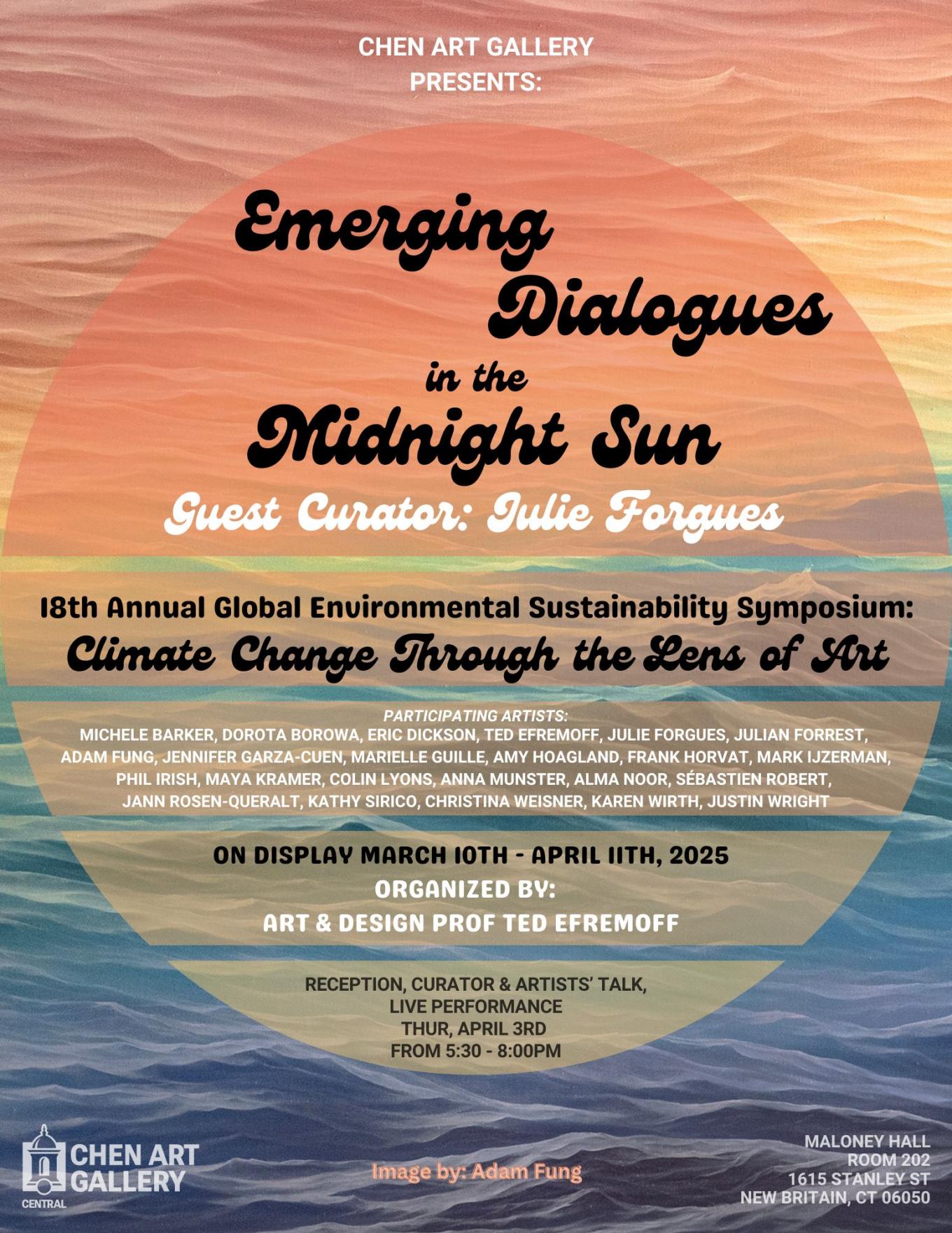
Emerging Dialogues in the Midnight Sun
(March 2025)
The Chen Art Gallery at Central Connecticut State University, New Britain, CT is proud to present the upcoming exhibition “Emerging Dialogues in the Midnight Sun.”
The show will run from March 10 to April 11, 2025. This exhibition features the work of twenty-two international artists including:
- Adam Fung
- Alma Noor
- Amy Hoagland
- Anna Munster
- Christina Weisner
- Colin Lyons
- Dorota Borowa
- Eric Dickson
- Frank Horvat
- Jann Rosen-Queralt
- Jennifer Garza-Cuen
- Julian Forrest
- Julie Forgues
- Karen Wirth
- Kathy Sirico
- Marielle Guille
- Mark Ijzerman
- Maya Kramer
- Michele Barker
- Phil Irish
- Sébastien Robert
- Ted Efremoff.
This exhibition is guest-curated by artist and Professor Julie Forgues from Département des arts visuels of Université de Moncton (New Brunswick, Canada) and organized by Professor Ted Efremoff of the Art & Design Department at Central Connecticut State University. Professors Forgues and Efremoff both participated in the Arctic Circle artist residency program around the Svalbard Archipelago (Norway) in the Summer of 2023 with a group of fellow artists, musicians and scientists hailing from all over the world. This exhibition represents the variety of practitioners that took part in this expedition and their understanding of climate change.
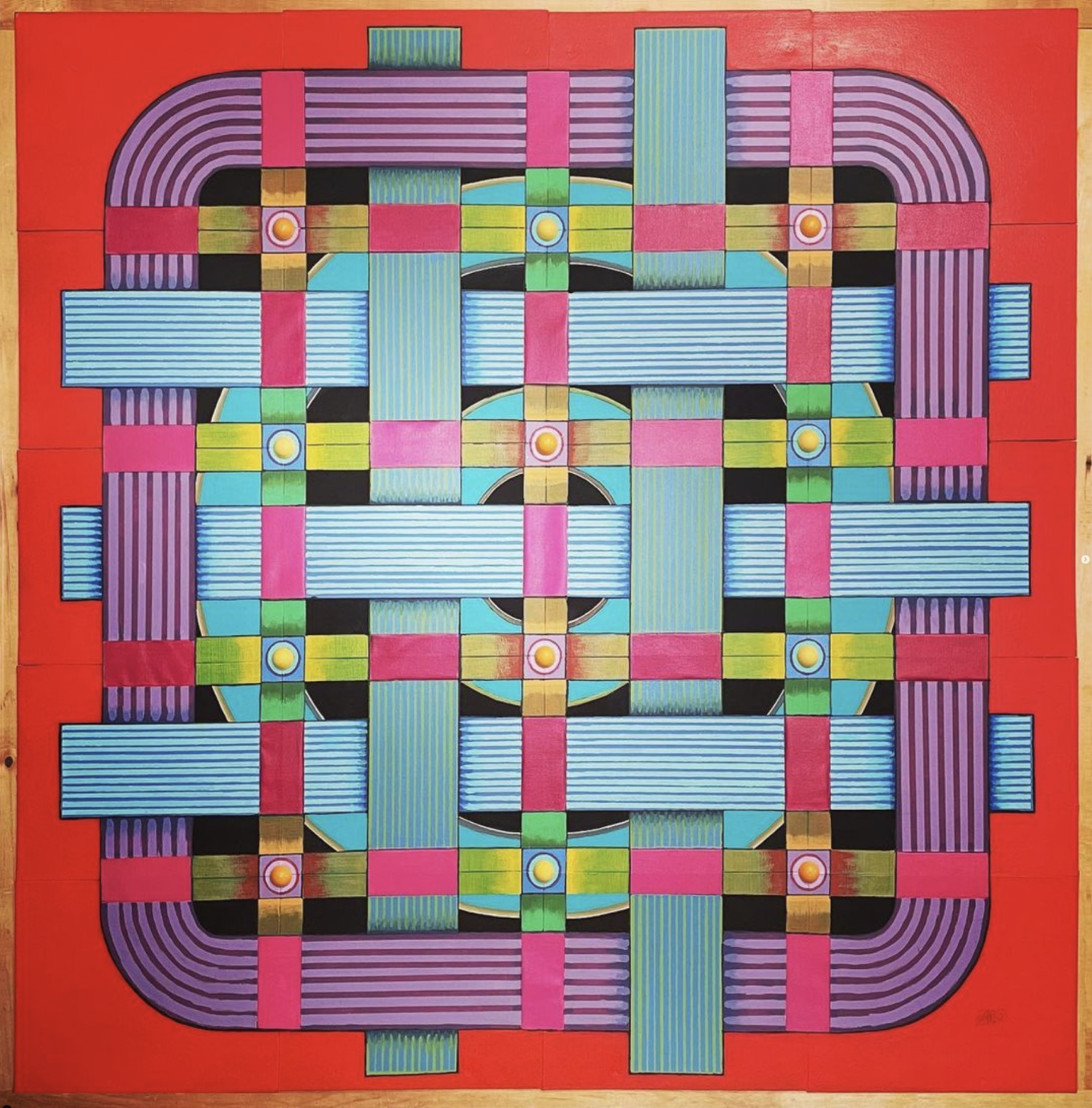
5IVE PERSPECTIVES
(January 2025)
The Chen Art Gallery at Central Connecticut State University, New Britain, CT is proud to present the
upcoming exhibition ‘5ive Perspectives.’ The show will run from January 23 to February 21, 2025. The Romanian Artist Connection (RoArtConn) group includes artists: Ioana Barac, Ileana Dumitriu, Luiza Budea, Liviu Cupceancu, Flavius Lucacel, Iulian Budea, and Adrian Panaitisor.
This exhibition is guest-curated by artist Adrian Panaitisor, a former 'Understanding Dimensions in Art' instructor at Manchester Community College, Manchester, CT. The 'Five Perspectives' show represents the first comprehensive public exhibition of the Romanian-born artists of the RoArtConn group. The RoArtConn members' exhibition openly displays a multitude of visual art forms like painting, illustration, sculpture, conceptual art, installation, and drawing. The work of these professional artists, with decades of experience and varying artistic philosophies, are rooted in the success of the famous Romanian art school–which gave the world artists like Constantin Brancusi and Adrian Ghenie, among many others.
The public is encouraged to attend an opening reception on Thursday, January 23, 2025 from 4 - 6:30 PM.
There will be a brief talk by the curator and a couple of participating artists at 4:30 PM. Refreshments and
hors d'oeuvres will be served.
Public Reception
Thurs January 23rd from 4 - 6:30 pm
Artist Talk at 4:30 pm
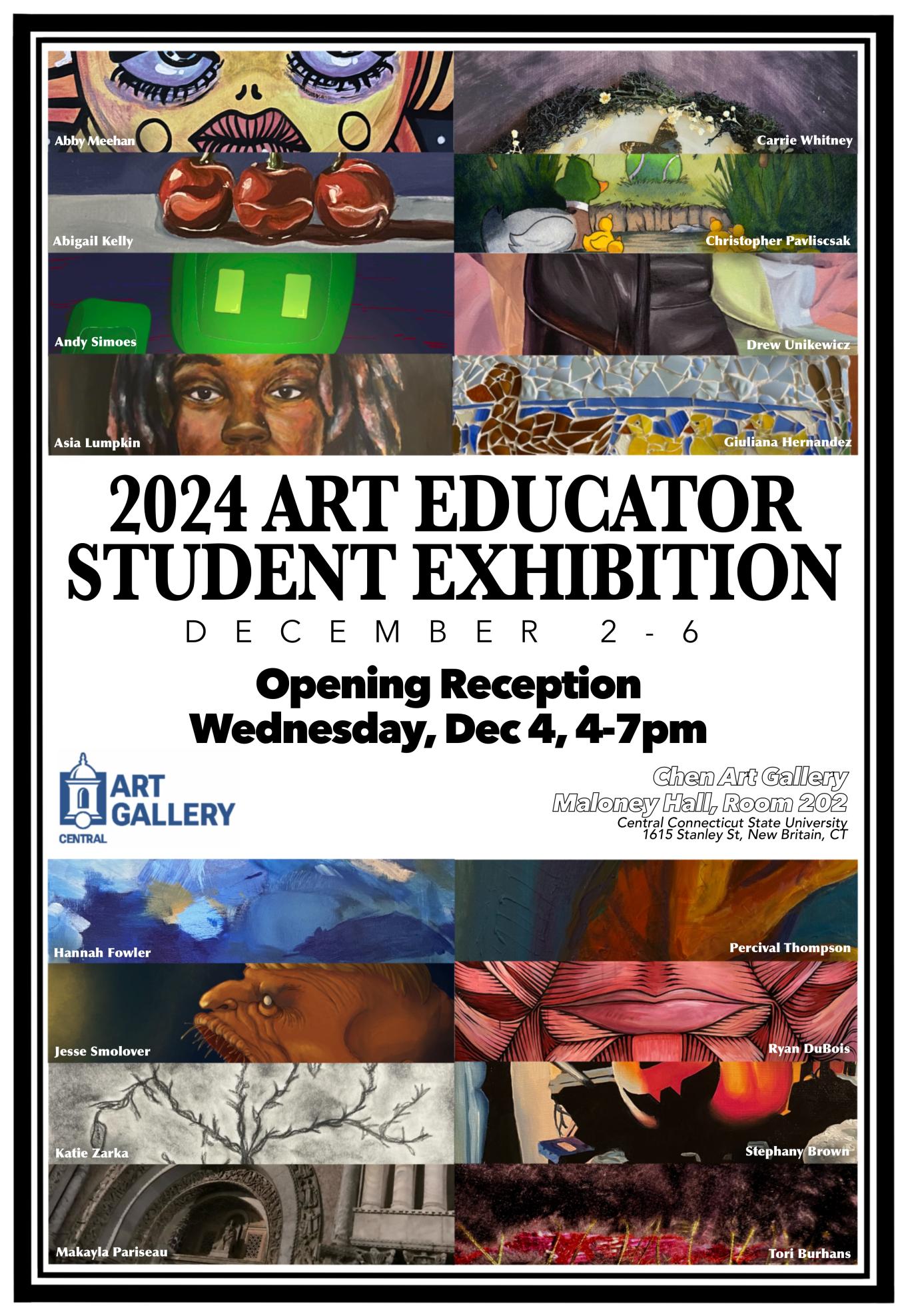
2024 Art Educator Student Exhibition
December 2 - December 6, 2024
Public Reception
Wednesday, December 4 from 4 - 7 p.m.
Artist Talk 4:30 p.m.
The 2024 Art Educator’s Exhibition is a dynamic showcase of the creative talents and forward-thinking approaches
of Art Education students at Central Connecticut State University. Featuring a diverse array of works ranging from
painting and sculpture to digital media and mixed techniques, the exhibition highlights how the next generation of art educators is poised to reshape the landscape of arts education. Each piece reflects not only mastery of artistic
skill but also the innovative methodologies these students are developing to inspire future artists in the classroom
and beyond. This exhibition is a testament to the bright future of arts education and its role in shaping well-rounded,
creative, and expressive individuals.
The featured works also delve deeply into the students’ personal visions, offering a window into their unique
perspectives and artistic journeys. From explorations of identity and culture to bold commentaries on societal issues,
each piece is a narrative in its own right, resonating with authenticity and passion. Visitors are invited to experience
firsthand how these emerging educators seamlessly blend their individual artistry with the pedagogical principles that will shape their teaching practices. Together, these works celebrate the transformative power of art and education, marking this exhibition as both a milestone in these students’ academic careers and an inspiration for the
wider community.
Show dates December 2-6, 2024. The public is encouraged to attend an opening reception on Wednesday, December
4th from 4 - 7 PM. Refreshments and horderves will be served. The gallery is located at Maloney Hall Room 202, the Chen Art Gallery has shown the work of contemporary artists, Central students, faculty, and alumni.

Proximity & Distance
Guest Curated by Shona Macdonald
October 17 - November 15, 2024
Public Reception
Thursday, October 17th from 4 - 7 p.m.
Artist Talk 4:30 p.m.
The Chen Art Gallery at Central Connecticut State University, New Britain, CT is proud to present an upcoming exhibition ‘Proximity & Distance.’ The show will run from October 17-November 15. The artists included are Namwon Choi, GA; Bill Conger, IL; Carrie Gundersdorf, NY; Jin Lee, IL; Young Min Moon, MA; Pete Schulte, AL.
The six artists invited by guest curator Shona Macdonald, Professor and Artist in the Department of Art at the University of Massachusetts Amherst, consider ideas about how closely inspected images open out to suggest larger spaces, whether philosophical, geographical, physical. What brings their practices together is a flow between near and far; downwards and outwards; proximity and distance. Not presented as opposites, the artworks form a conversation between these ever-shifting states of being. ‘Proximity & Distance’ considers two parallel ideas. First, the re-emphasis of place over the rapid acceleration of time. Second, the notion of parallax vision, the displacement
of objects when seen from two different points of view: ‘proximity and distance.’
The public is encouraged to attend an opening reception on Thursday, October 17th from 4 - 7 PM. There will be a brief talk by the curator and a few participating artists at 4:30 PM. Refreshments will be served.
Although the exhibition “Transformed by Fire: Feats of Clay” ended last Friday, October 4, we wanted to share the great news that the online fundraiser hosted by Institutional Advancement is going to be extended through October 19th. And there is still time to purchase an original work of Thomas Zaccheo while supporting the Ceramics and Sculpture Department. Thank you in advance for your support!
If you have any questions about making an online purchase or details about this fundraiser, please contact Lisa Bigelow, Bigelow@ccsu.edu.
Read more about the exhibition in the latest issue of Connecticut Magazine.


